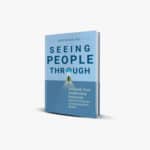
My Top 5 Resources For Inclusive Workplace Practices
Share viaTolerance thrives in a society where we still believe in the myth of separate but equal, and therefore cannot see the world through lenses other than our own. Tolerance flattens diversity, it erases it. Whereas inclusion activates it and enables us to interact with each other on a human level. – Kristen Donnelly
Beyond the required training, how do you really foster inclusive workplace practices and cultures? 1) Practice evolved compassion, 2) Recognize types IN people, not types OF people, 3) Learn how to have difficult conversations, 4) Recognize your unconscious personality bias, and 5) Incorporate personality as a critical dimension of diversity. Keep reading for helpful equity, diversity, and inclusion resources!
A Template For Compassionate Inclusion
Real inclusion requires an evolved practice of compassion that includes openness, resourcefulness, and persistence. What does this look like and how do you do it? Here’s a template that any organization can apply to guide their culture change efforts.
Initiate Difficult Conversations With These Four Steps
Shortly after George Floyd’s death, I reached out to a friend who leads diversity, equity and inclusion initiatives for a company in Atlanta. Her request was simple but profound; “We just need better ways to talk to each other right now.”
Glenn Winfree, VP of Human Performance and HR for Conning, reflected on this same challenge, “How do we have that next conversation after the OUCH moments?”
Here’s a step by step guide on having difficult conversations, especially applicable around messy topics like diversity.
Next Element has been a fantastic partner helping Conning to build a culture of inclusion. The compassion skills are a great set of tools in our toolkit. – Glenn Winfree
Types IN People, Not Types OF People
When people think of individual differences and diversity, they usually talk about types OF people. This is especially true with personality; “I’m an introvert,” or “I’m a High-D.” Unfortunately, this oversimplification of diversity get us further away from inclusion. There’s a better way to look at personality. Learn how the Process Communication Model® can change your mindset toward individual differences and your practice of inclusion.
What Is Your Unconscious Personality Bias?
While we are on the topic of personality, did you know that everyone has unconscious personality bias? Although we all have all the types IN us, the less developed parts of our personality are likely the cause of unconscious bias towards persons who have these same parts more prominent in their personalities. Can you recognize your bias from the list in this article? What positive qualities and potentials are you missing? And what can you do about it?
Becoming a Better Leader Through Inclusive Workplace Practices
 I was interviewed by Psychology Today about my newest book, Seeing People Through, the definitive guide for Personality Inclusion. One of the most practical parts of this interview is where I share the fundamental psychological needs of all six personality types and how leaders can meet these needs to help each type thrive, contribute, and feel included.
I was interviewed by Psychology Today about my newest book, Seeing People Through, the definitive guide for Personality Inclusion. One of the most practical parts of this interview is where I share the fundamental psychological needs of all six personality types and how leaders can meet these needs to help each type thrive, contribute, and feel included.
Personality inclusion is our specialty. If you are curious to learn more, here are the 10 Commandments of a Personality Inclusive Workplace.
Copyright, Next Element Consulting, LLC 2022
Develop Your Inclusive Communication Skills
Book Your Next Keynote Speaker

Author and Co-founder of Next Element, Dr. Nate Regier is available to speak at your upcoming event.
Submit a Speaker RequestPodcast: Listen to Nate "On Compassion"
 Listen to the Podcast
Listen to the Podcast



0 Comments
Add comment